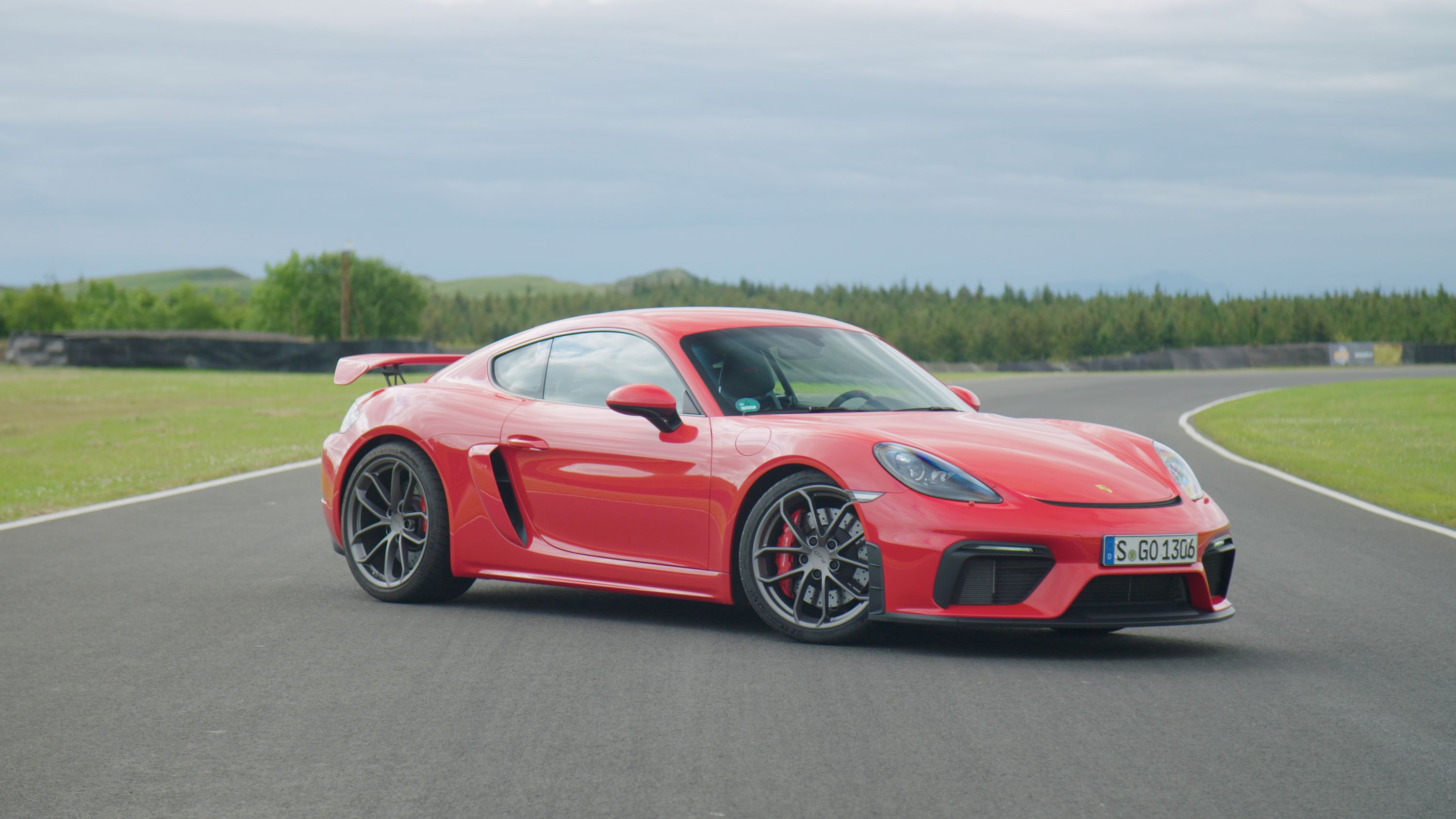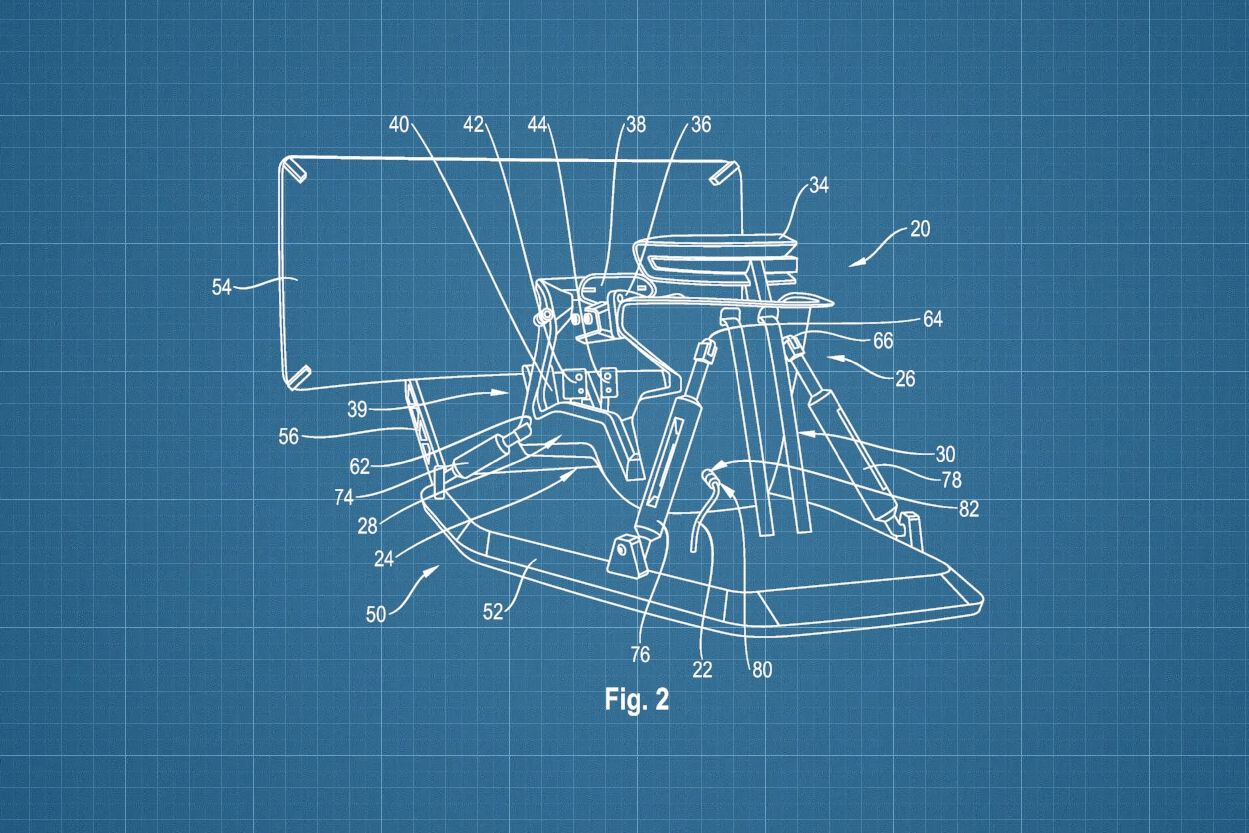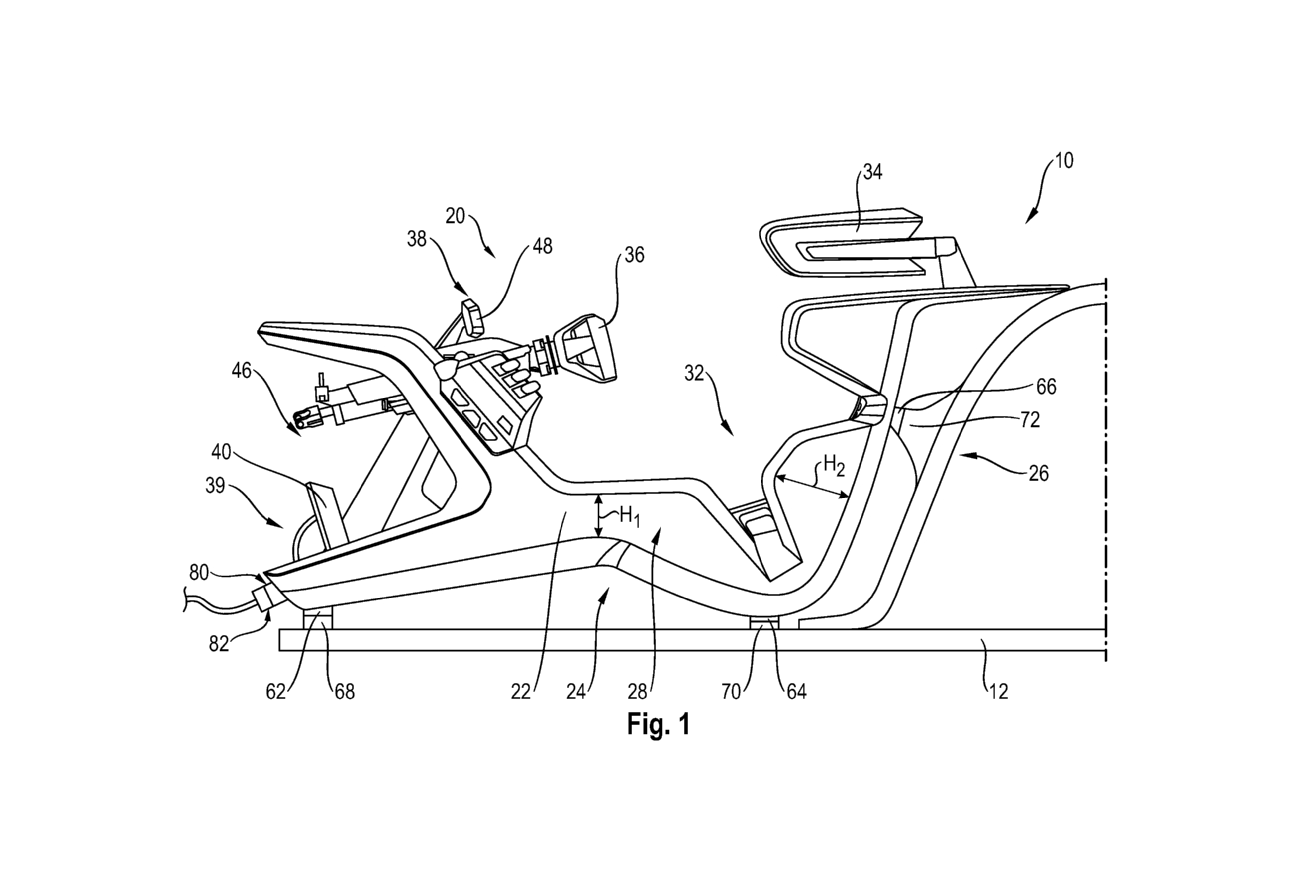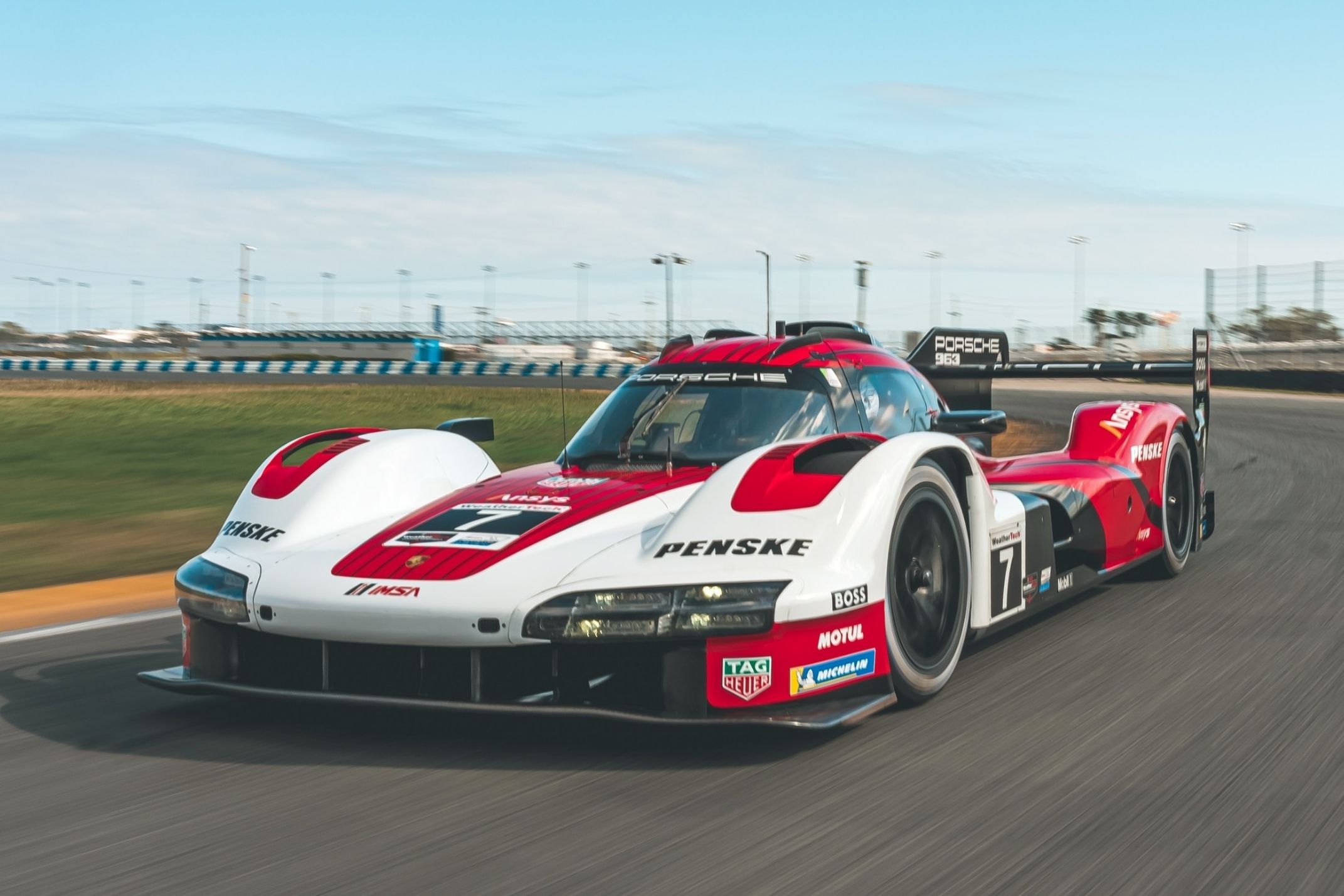
Porsche has filed a patent with the German Patent and Trademark Office (DPMA) for a new sim racing rig that will use the entire safety cell from a real race car, letting drivers get even closer to the experience of an actual race even when practicing.
The art of racing motorcars no longer revolves around getting as much seat time as possible in the real thing. Simulators are a big part of modern racing, with F1 drivers clocking thousands of hours in the sim before the season starts, while developing the car, and even in the week building up to a race, letting them get used to the track before they even set foot in the pitlane.
But racing sims are never quite the same as the real deal, and that's what Porsche wants to change by developing a safety cell that, when not connected to a sim rig, can be dropped straight into a race car. This gives the driver all the realism of their race car but without the complexity of a replica race car being built around them, reducing cost and complexity.
The sim rig design comprises several elements. The safety cell is the first of these and is supplied by the manufacturer, be it Porsche or a third party. Within this, the control componentry (steering wheel, pedals, gear shifter, etc.) and the seat would also be from a genuine supplier and housed within the safety cell itself, with the seat shell ideally having a one-piece construction, typically molded to the size and shape of the driver. Being a single-piece item, it reduces the number of connection points needed to the safety cell; fewer connection points equals fewer potential spots for weakness and separation.
Together, this safety cell would be manufactured with a single wiring harness and an adapter that would allow it to connect to the rig itself, which would comprise the actuators to simulate movement and G-forces, as well as multiple screens, or a single curved screen, to replicate the driver's view of the track.
With Porsche's hopes of entering F1 in 2026 seemingly dashed, we don't think the German sports car maker is targeting the top tier of motorsport with this new invention. However, Porsche currently competes in the new LMDh endurance category and had its first outing at the Daytona 24 Hour last month.
LMDh cars use proper safety cells and could be an ideal candidate for such a sim rig. The closer to reality a driver's practice is in a sim, the more likely it is to yield results when rubber meets road. Best of all, though, Porsche's motorsport HQ in Weissach would be able to have fewer sim rigs with interchangeable safety cells depending on the motorsport application being simulated.
Because the rig uses a genuine safety cell, it would not rely on a new rig being built for each series. Today, Porsche's Formula E drivers could use the sim rig, but tomorrow, the LMDh pilots from Penske Racing could simply attach their safety cell and jump into the same rig.
However, because this setup relies on genuine safety cells, like those manufactured by Multimatic - the company that manufactures the Porsche 963's chassis and safety cell and the Ford GT supercar and its racing variants - we're unlikely to see this advanced rig tech used in customer racing where cars like the Porsche 718 Cayman GT4 Clubsport use a road car chassis with a roll cage fitted for safety.



